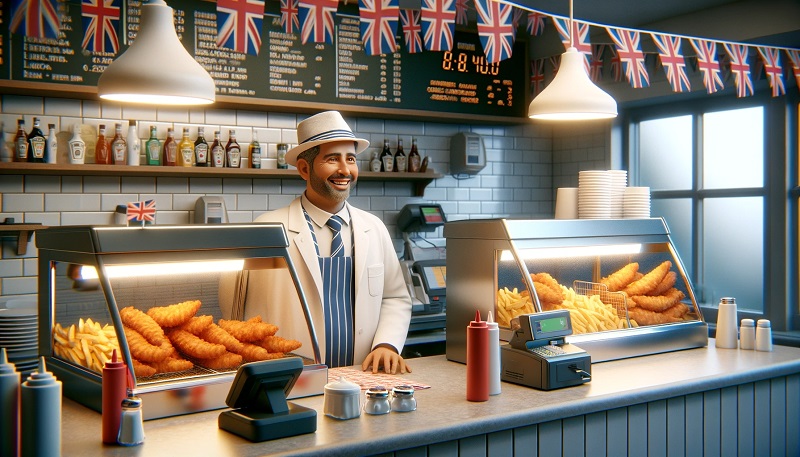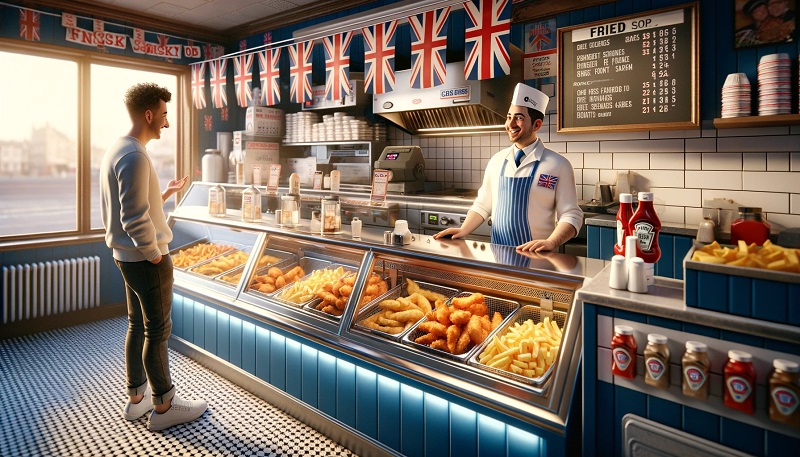🔥 Popular Free Downloads

THE FULL WORKS
All of our staff training manuals in one handy download!

FREE STAFF HANDBOOK
A totally customisable free staff handbook download.

FREE PROFIT & LOSS CALCULATOR
Keep on top of your expenses with our free profit and loss calculator.
⭐ Popular Resources

SWOT ANALYSIS
SWOT Analysis explained in detail accompanied by a free download.

DOWNLOADS HUB
The place to download all of our free forms, templates & guides.

FREE CASH FLOW CALCULATOR
Download our free template or use our online cash flow calculator.

FREE MARKUP CALCULATOR
Maximise your profits with our free markup calculator tool.

BAR MANAGEMENT TRAINING
Simple and free online bar and cellar management training.
🔥 Popular Pages
- How to Run a Restaurant
- Awesome Articles
- Managing Your Staff
- Marketing Your Restaurant
- Restaurant Financing and Funding
- Maintaining Neutrality in Pronoun Usage
- Everything You Wanted To Know About Gin
- Safe Cooking Temperatures For Meat

SWOT Analysis for a Fish and Chip Shop - With Free Download
Written by The Restaurant Doctor UK Team
Last Updated: 6th November 2023
Welcome to our SWOT Analysis Guide for Fish and Chip Shop Owners and Managers. If SWOT Analysis is new to you, this page will provide you with the essential information to perform a detailed SWOT analysis for your shop.
What is SWOT Analysis?
SWOT Analysis is a planning method to help understand the Strengths, Weaknesses, Opportunities, and Threats related to your business.
It's a helpful way to figure out what's working well and what's not in your fish and chip shop, and to identify potential opportunities and challenges you might face in the market.
Strengths
Consider what your fish and chip shop does exceptionally well. It could be your secret batter recipe, the prime location of your shop, or your excellent customer service. These are the advantages that set you apart from the competition.
These might include:
- Quality of Ingredients. High-quality, fresh fish and locally sourced potatoes.
- Unique Selling Proposition (USP). Signature batter recipe or a secret sauce that differentiates you from competitors.
- Customer Loyalty. A strong base of regular customers who choose your shop over others.
- Location. A prime spot with high foot traffic, such as a seaside promenade or a town centre.
- Brand Recognition. A well-known name or a strong online presence.
- Service Speed. Efficient service that minimises customer wait times.
- Price Point. Competitive pricing without compromising on quality.
- Diverse Menu. Offering a variety of items catering to different dietary needs (e.g. gluten-free options).
- Staff Expertise. Experienced chefs and friendly, attentive service staff.
- Operational Efficiency. Streamlined processes from order to service delivery.

Understanding Strengths
Let’s illustrate how a strength in your SWOT analysis can be used effectively with a real-world example related to a fish and chip shop.
Strength: Locally Sourced Fish
Imagine that your fish and chip shop has committed to use only locally sourced fish. Here’s how to understand and leverage this strength:
Why It’s a Strength
Product Quality
Locally sourced fish often means fresher produce, which can translate into better taste and texture, providing a superior culinary experience.
Market Appeal
There's a growing consumer trend towards supporting local businesses and sustainability. Using local produce aligns with these values.
Unique Selling Proposition (USP)
Not all food outlets prioritise local sourcing, so this can be a differentiator in a crowded market.
Educating your Customers
Create Awareness Make sure your customers know about this strength:
Marketing Materials
Use signage, menus, and online content to highlight the use of local fish.
Storytelling
Share stories of where the fish comes from, perhaps including information about the local fishermen and waters from which the fish are sourced.
Building a Strategy Around Your Strength
Target Market Identification
Identify customer segments that value locally sourced food, such as health-conscious individuals or environmental advocates.
Promotional Campaigns
Launch campaigns that emphasise local sourcing, like “Fresh from the Sea” weekends with special dishes.
Partnership Opportunities
Partner with local suppliers or community events to strengthen your positioning as a community-oriented business.
Measuring the Impact
Customer Feedback
Regularly ask customers for feedback on the quality and appeal of your locally sourced fish.
Sales Tracking
Monitor the sales of dishes made with locally sourced fish to see if there's an increase following your marketing efforts.
Brand Perception
Use surveys or social listening tools to gauge whether your brand is increasingly associated with local sourcing and quality.
Adjusting Your Approach
Stay Informed
Keep abreast of any changes in local sourcing trends or supply.
Adapt to Feedback
If customers suggest improvements or express new preferences, be prepared to adjust your approach.
Expand Your USP
If local sourcing becomes a hit, consider expanding this approach to other ingredients or menu items.
By looking at this strength in more detail, you can see how it not only contributes to the appeal and operations of your chippy but also how it can be central to your business strategy and marketing efforts.
Weaknesses
Weaknesses are areas where your business could improve. Do you have outdated frying equipment? Is your seating area less inviting than your competitors? Identifying these aspects can help you make the necessary improvements.
Examples of weaknesses might include:
- Limited Seating Capacity. Not enough space to accommodate a large number of dine-in customers.
- Outdated Equipment. Old frying equipment is less efficient and could affect the taste and quality of the food.
- Marketing Efforts. An inadequate marketing strategy leads to less visibility.
- Dependence on Seasonal Business. Over-reliance on tourist seasons for revenue.
- Lack of Online Ordering. No option for customers to order online in an increasingly digital world.
- Higher Costs. Relatively high overhead costs compared to competitors.
- Menu Stagnation. An outdated or unchanging menu that fails to excite repeat customers.
- Waste Management. Inefficient waste management leads to higher costs and environmental impact.
- Limited Payment Options. Not accepting credit cards or mobile payments.
- Staff Turnover. High rates of staff turnover lead to inconsistent service quality.

Understanding Weaknesses
Weakness: Limited Seating Capacity
Suppose your fish and chip shop is small, with a seating capacity that can't accommodate large crowds, especially during peak hours. Here's how to acknowledge and address this weakness:
Why It’s a Weakness
Customer Inconvenience
Potential customers may choose to go elsewhere if they consistently find no seating available.
Lost Revenue
Every unfilled seat is a lost sales opportunity, especially during high demand times.
Reduced Experience
Limited seating can result in a cramped atmosphere, diminishing the overall dining experience.
Recognising the Impact
Assess the Extent
Determine how often customers leave due to lack of seating and what times are most affected.
Developing Solutions
Space Optimisation
Rearrange or choose different furniture to maximise space.
Queue Management
Implement a system to manage waiting times more efficiently, like text alerts when a table is ready.
Expansion Plans
If feasible, consider expanding your physical space or adding outdoor seating.
Turning Weakness into Opportunity
Takeout and Delivery
Boost your takeout and delivery services to cater to customers who can't dine in.
Special Off-Peak Offers
Encourage customers to visit during slower times with special deals or menu items.
Loyalty Programmes
Create a loyalty programme to encourage repeat business from customers who have to wait or take their food to go.
Educating your Customers
Transparent Communication
Be upfront with customers about wait times and seating limitations.
Highlight Alternatives
Promote your takeout and delivery options prominently, showing that you value customer convenience.
Measuring Improvement
Customer Surveys
Regularly solicit customer feedback to understand their experience and satisfaction levels regarding the seating situation.
Sales Analysis
Track sales during peak and off-peak hours to see if alternative strategies are mitigating the impact of limited seating.
Operational Metrics
Measure wait times and table turnover rates before and after implementing changes.
Continuous Improvement
Stay Adaptable
Be ready to further adjust your strategies based on customer feedback and business performance.
Regular Review
Make it a routine to re-evaluate your seating capacity and customer handling to find new ways to improve.
By taking care of a weakness early on, you can reduce its effects and at the same time find new ways to grow and make your customers happier. Dealing with weaknesses in this way is important because it helps you change possible downsides into plans that can improve your business.
Opportunities
These are external chances for your chip shop to grow and improve its profitability. Perhaps there's an upcoming local festival where you could set up a stall, or maybe there's a growing trend in healthier eating that you could capitalise on with a new menu item.
Examples of opportunities might include:
- Food Trends. Capitalising on healthy eating trends with the introduction of grilled fish options.
- Catering Services. Expanding into catering for events and parties.
- Brand Partnerships. Collaborating with local businesses or events for mutual promotion.
- Expansion. Opening another location or offering franchise opportunities.
- Technology.Implementing an online ordering system or a mobile app for better customer engagement.
- Marketing Campaigns. Leveraging social media for targeted marketing campaigns.
- Customer Feedback. Using customer reviews and feedback to improve services.
- Loyalty Programmes. Creating a loyalty programme to encourage repeat business.
- Sustainability Practices. Adopting eco-friendly practices, like using biodegradable packaging, which can attract environmentally conscious customers.
- Community Involvement. Participating in community events to increase visibility and goodwill.

Understanding Opportunities
Opportunity: Rise in Local Tourism
Imagine your fish and chip shop is located in an area that's becoming increasingly popular with tourists. Here’s how to leverage this opportunity:
Recognising the Opportunity
Increased Foot Traffic
More visitors could mean a significant uptick in potential customers.
Cultural Appeal
Tourists often seek out authentic local dining experiences.
Marketing Leverage
The area’s growing popularity can be a focal point in marketing campaigns.
Assessing the Potential
Evaluate the Trends
Research the tourism growth trends in your area to predict potential customer increases.
Strategies to Capitalise
Local Partnerships
Collaborate with local hotels, travel agencies, and tourist attractions to offer promotions.
Tourist-Friendly Services
Provide menus in multiple languages, and consider accepting international payment options.
Extended Hours
Adjust your opening times to accommodate the schedules of tourists, who may be out later than local residents.
Enhancing Experience
Authenticity
Emphasise the traditional aspects of your fish and chip shop to appeal to tourists looking for an authentic experience.
Souvenirs
Offer branded merchandise that tourists can take home as mementos.
Marketing the Opportunity
Social Media
Use social media to target tourists, showcasing your shop as a must-visit destination.
Travel Platforms
Register your shop on travel review sites and actively manage your presence there.
Local Events
Participate in or sponsor local events that are likely to draw tourists.
Measuring Success
Sales Tracking
Monitor sales data to measure increases that correlate with tourism trends.
Customer Feedback
Collect feedback specifically from tourists to understand their experience and what drew them to your shop.
Promotion Effectiveness
Analyse the success rate of partnerships and promotions targeted at tourists.
Review and Adapt
Stay Informed
Keep abreast of changes in local tourism and adjust your strategies accordingly.
Continuous Engagement
Regularly update your tourist-targeted offerings and marketing materials to keep them fresh and appealing.
Long-Term Planning
Sustainable Growth
Develop a strategy for maintaining tourist interest beyond the peak seasons.
Investment in Quality
Ensure that increased demand doesn’t compromise the quality of food and service, which are critical for drawing repeat business and word-of-mouth recommendations.
By making the most of an opportunity, you can greatly increase your number of customers and your sales. The main thing is to really understand the opportunity, make a smart plan, and take steps that will help your business grow in the long run without losing what makes it special and the quality of what you offer.
Threats
Threats are external factors that could cause problems for your business. This could include a new fish and chip shop opening nearby, rising costs of fish due to market changes, or even regulatory changes that affect how you operate.
Examples of threats might include:
- New Competitors. The opening of new fish and chip shops nearby.
- Economic Downturns. Economic challenges that reduce customers' disposable income.
- Supply Chain Issues. Fluctuations in the price and availability of fresh fish and potatoes.
- Regulatory Changes. New food safety regulations that require changes in operations.
- Health Trends. A shift in public opinion against fried foods.
- Seasonal Variations. Off-season periods with lower customer turnout.
- Rent Increases. Higher operating costs if the rent for your shop's location increases.
- Technological Advancements. Competitors gain an edge through better use of technology.
- Changing Customer Preferences. Customers preferring different dining experiences or cuisine options.
- Negative Reviews. Impact of bad customer reviews on social media and rating platforms.

Understanding Threats
Threat: A New Competitor in the Market
Suppose a new takeaway has opened nearby, threatening to attract away your customers. Here’s how to approach this threat:
Identifying the Threat
Direct Competition
The new restaurant offers similar products.
Market Share Risk
Potential loss of your current customer base.
Competitive Pricing
They might introduce lower prices or special offers.
Evaluating the Threat
Market Analysis
Study the competitor’s offerings, price points, and marketing strategies.
Developing Counterstrategies
Unique Selling Proposition (USP)
Emphasise what makes your fish and chip shop unique, like a secret batter recipe or a traditional cooking method.
Customer Loyalty Programmes
Introduce or enhance loyalty programmes to retain your current customers.
Quality Over Quantity
Focus on maintaining high-quality food and service that can't be easily replicated by competitors.
Enhancing Defensive Measures
Staff Training
Ensure that staff are providing exceptional service to create an unmatched dining experience.
Community Engagement
Strengthen relationships with the local community through events or local charities to build a supportive customer base.
Marketing Strategies to Combat Threats
Targeted Promotions
Run special promotions that highlight the unique aspects of your shop.
Brand Awareness
Increase efforts in marketing to reinforce your brand's presence in the community.
Customer Testimonials
Use positive customer reviews in marketing to show the value of your shop's experience.
Monitoring the Impact
Sales Analysis
Keep an eye on sales figures to gauge any impact the new competitor has on your business.
Customer Surveys
Conduct surveys to understand customer satisfaction and areas for improvement.
Competitor Watch
Keep track of the competitor's moves to stay a step ahead.
Review and Reinforce
Adjust Strategies
Be prepared to adjust your strategies in response to the competitor’s actions.
Innovation
Continuously seek ways to innovate your menu and service to stay relevant.
Long-Term Defensive Planning
Diversification
Consider diversifying your offerings to reduce the risk of losing customers to one competitor.
Sustainability Plans
Develop a plan to ensure your business remains sustainable, even with increased competition.
By tackling the threat of a new rival early, you can strengthen your place in the market. This means you need to figure out what the threat is, plan ways to deal with it, and keep an eye on the competition so you can adjust as needed.
Focus on using what your chip shop does best and keep giving the great quality and unique experience your customers expect.

The Importance of SWOT for Your Chip Shop
For small businesses like your fish and chip shop, doing a SWOT analysis is very important. It helps you understand what's special about your business, what challenges you have, where you can grow, and what problems could come up.
This understanding lets you make smart choices to guide your business in the right direction.
Using SWOT for Strategic Planning
Step 1: Leverage Strengths
Your strengths are what make your shop stand out. Lean into them to differentiate yourself in the marketplace. Say your special batter recipe is a strength; make it a star in your branding and advertising.
Give new customers a taste, talk about it on your menus and online, and encourage people to spread the word. This way, you can draw in more customers who are searching for a special fish and chip experience.
Step 2: Improve Weaknesses
Weaknesses aren't signs of failure; they're chances for improvement. For example, if slow service due to old equipment is a weakness, plan to update your fryers and kitchen utensils. This can make your food better and your service faster, which may lead to happier customers and more people coming back.
Focus on fixing the weaknesses that affect your customers the most.
Step 3: Seize Opportunities
Opportunities are easy wins that can help you expand your business with minimal effort. For example, if there's a new housing development close to your shop, it's a perfect chance to get more customers.
You could hand out flyers in the area or get involved with local events to showcase your shop to potential new customers.
Step 4: Mitigate Threats
Threats require a defensive strategy. If a new fish and chip shop has opened up nearby, consider how you can solidify customer loyalty. Maybe introduce a loyalty card scheme or host community events.
If there’s a threat of rising fish prices, look into locking in prices with suppliers or sourcing alternative options that don’t compromise quality.
Actionable Steps for Strategic Planning:
- Set Clear Objectives. Decide what you want to achieve in your business within a certain timeframe, like increasing sales by 20% over the next year.
- Develop Action Plans. For each component of the SWOT, outline specific actions. For example, to leverage a strength, you may decide to create a social media campaign showcasing your unique selling points.
- Assign Responsibilities. Determine who on your team will be responsible for implementing each part of the strategy. Make sure they understand the goals and have the resources they need.
- Monitor Progress. Regularly check how well the strategies are working. Are you seeing more repeat customers? Are online orders increasing? Adjust your approach as needed based on these metrics.
- Review and Adjust. The market is always changing, and your SWOT analysis will need to be updated periodically. Regularly revisiting your SWOT analysis ensures that your strategies remain relevant and effective.
Learning about these steps and using them for your fish and chip shop will help you get better at using SWOT analysis for planning. It will not only help you know where you stand in the market right now but also help you make smart choices for your business's future.
Conducting Your SWOT Analysis
Creating a SWOT analysis for your fish and chip shop doesn't have to be daunting. Here’s a step-by-step guide to gather the necessary information and create a plan of action.
Step 1: Encourage Team Input
Your employees are your eyes and ears on the ground. They interact with your customers daily and see your operations in action. To tap into their insights:
Hold a Brainstorming Session
Organise a meeting with your team. Encourage them to share their observations and experiences. What do they think are the shop’s strengths? Do they notice any recurring issues that could be weaknesses?
Create a Safe Space for Feedback
Make sure your team knows that all feedback is valuable, and there will be no negative consequences for honest input.
Ask for Customer Feedback
Your team can also be instrumental in gathering feedback from customers, either through casual conversations or structured surveys.
Step 2: Perform an Internal Review
Take a step back and assess your business operations with a critical eye. Consider the following:
Menu Evaluation
Analyse your menu offerings. Are there items that are particularly popular or ones that rarely sell?
Service Speed and Quality
Time the service during peak hours. Is the customer experience consistent even when it's busy?
Facility Maintenance
Check your equipment and facilities. Are there repairs or upgrades needed to improve efficiency?
Step 3: Engage in Market Research
Understanding the market is crucial. It involves:
Industry Trends
Read industry reports, attend food expos, or join trade associations to learn about the latest trends in the food service sector.
Competitor Analysis
Visit other fish and chip shops. What are they doing well? What gaps in service or quality can you identify that your shop could fill?
Customer Preferences
Use social media, online reviews, and direct customer feedback to gauge what your customers are looking for in a fish and chip shop.
Step 4: Create an Action Plan
With the information from the above steps, you can now develop a targeted action plan.
Prioritise Your Findings
Not all SWOT elements are equally important. Decide which ones have the most immediate impact on your business.
Set Specific Goals
For each priority, set a clear, measurable goal. If a strength is your shop’s secret sauce, a goal could be to increase its mention in all marketing materials by 50%.
Outline Steps and Resources Needed
For each goal, list the steps needed to achieve it, along with any resources required, such as additional staff training or marketing funds.
Assign Responsibilities and Deadlines
Make someone accountable for each goal, with a clear deadline for completion.
Regular Review
Set dates for regular reviews of your action plan to monitor progress and make adjustments as necessary.
Doing a SWOT analysis is like going in circles – you keep coming back to it again and again. This is because your business keeps changing, and you want to make sure your plans still fit with what’s happening in your shop.
If you do these steps carefully, even if you’ve never done a SWOT analysis before, you can get good at it and make it a regular part of planning for your business.
Tips for a Productive SWOT Analysis
- Be brutally honest and objective in your assessment.
- Focus on specific and actionable points rather than vague observations.
- Regularly update your SWOT analysis to reflect changes in the market or your business.

Final Thoughts
Creating a SWOT analysis for your fish and chip shop is an important move to unlock your business's full potential. It helps you see the unique aspects of your shop, from the quality of your food to the customer service you provide.
Keep in mind that every successful business takes time to look back, make changes, and grow. By looking at your strengths, weaknesses, opportunities, and threats, you begin to write your own success story. Each new understanding doesn’t just prepare you for what’s next; it lets you shape your future to be as satisfying as the meals you offer.
Taking the first step might seem tough, but remember, you’re not doing this alone. We’ve made a special SWOT template to make getting started easier for you. This template will help you see things clearly and focus on what matters. It will be
your guide in the business world, helping you find opportunities and set a path towards success.
Start exploring your potential - download your free SWOT template below:
👉 YOUR DOWNLOAD
You may also like...
Business Finance, Credit, Borrowing Money and Funding:
Looking to borrow money or wanting to apply for a credit card, mortgage, overdraft, business loan or even car insurance for your restaurant? This article covers the areas you need to consider when applying for finance, borrowing money and applying for credit for your business. Looking after your money is important, especially money you borrow.